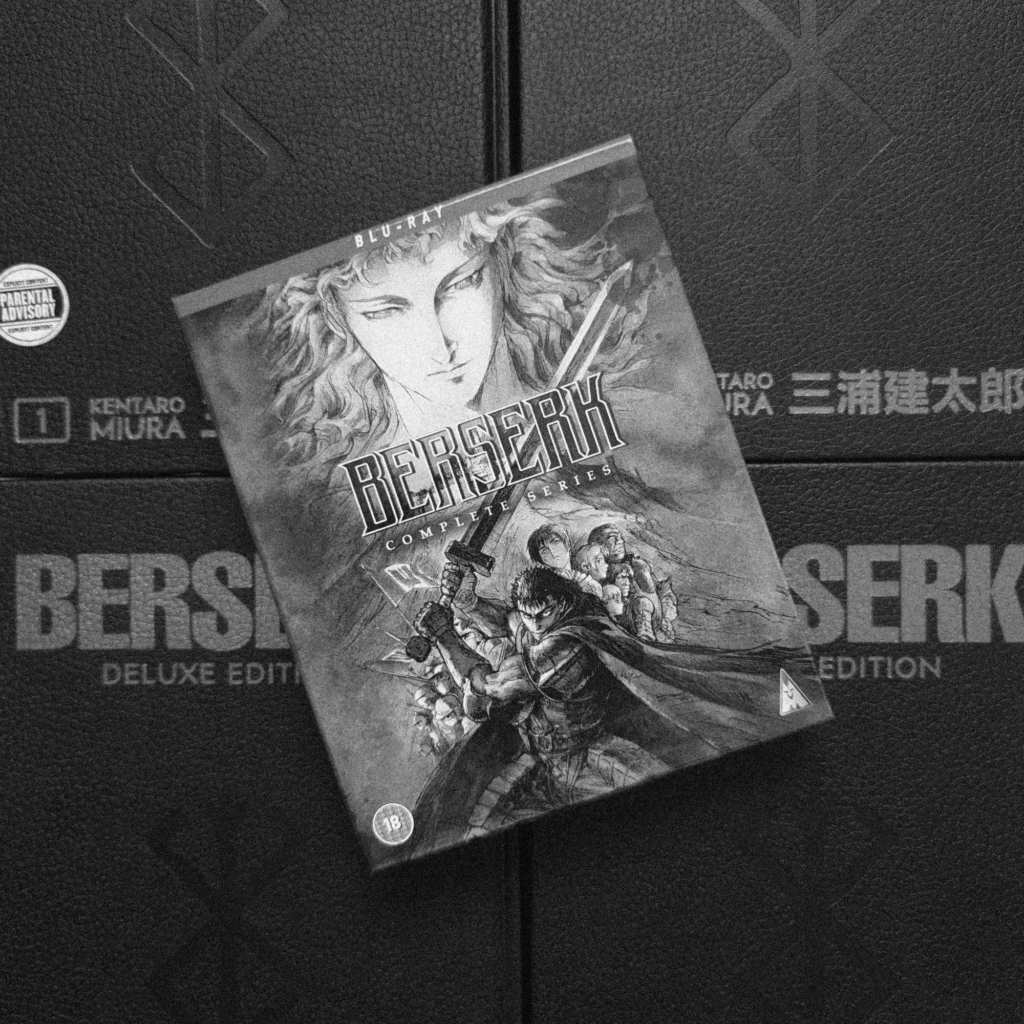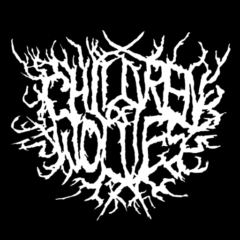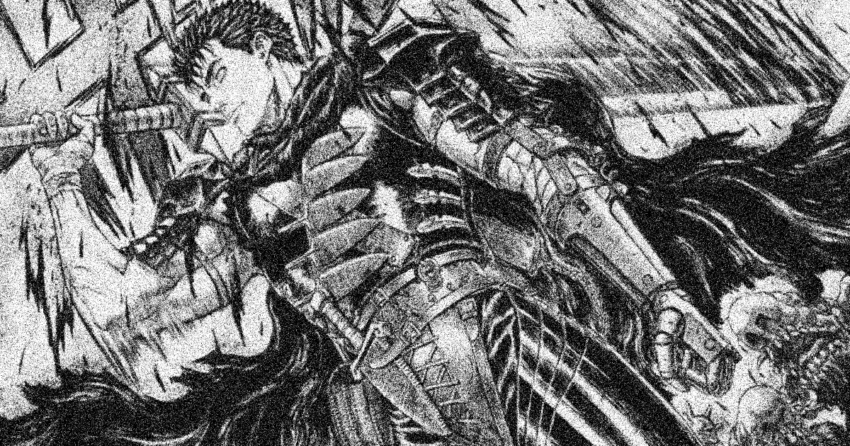Although I’ve been a fan of anime and manga most of my life now (ever since seeing an advert for Akira on VHS in the early 90s, a whole story in itself), Berserk was something I came a bit late to.
It’s one of those titles that constantly tops “must read/see” lists, and is something I’ve always picked up in shops to look at, but as it’s always been wrapped in cellophane due to it’s graphic content I’ve always put it back down and forgot to look it up online.
Then last year, the 1997 anime was re-released on Blu-ray here in the UK so I thought I’d finally dive into it’s world. I like a lot of modern anime, but I’ve got a big soft spot for 80’s and early 90’s stuff, and even though this was released in 1997 it has that look and feel of something much earlier (which in this case is a good thing!).
The anime ends on kind of a cliff-hanger (hard to explain without directly spoiling it), but is also one of those endings that feels satisfying to me (again, hard to explain but I won’t spoil it just yet). But I wanted to know what happens next and so looked into the films (2012-2013) and the next series from 2016, which partially re-tell the original series as well as carrying on the story further. However most online accounts agree to skip these and just go straight to the manga, which is what I did (though my curiosity means I may still end up watching the 2012 and 2016 animated versions).
As a sucker for nice, deluxe editions of things, especially books, I decided to dive straight in with the Vol 1 Deluxe Edition which collects the first 3 “tankōbon”, each of which originally collected multiple chapters of the serialised manga, in one, big, heavy hardback edition. As of writing I’m just about to start Deluxe Edition Vol 4, so no spoilers please!
Now is where I’m going to get into a few minor spoilers about the differences between the 1997 anime and the early books of the manga, and how it helped inspire certain aspects of my own work. This is your final warning…

I watched the anime after I’d already started creating my “alternate-history” England, but it influenced me to make some aspects a bit more “fantasy”-like, such as larger than life characters, castles that probably couldn’t really exist and so forth. I’m staying away from standard “fantasy” with my stories, there’s no dragons, elves or the like, focusing more on folk-horror, but I like the idea of a fantasy style world with real-world rules.
One thing that struck me about the anime (and this is more noticeable if you watch the anime first and then read the manga), is how when the anime starts there is very little in the way of magic, monsters or other fantasy tropes. At the start, Guts (the main character) fights a monstrous character, then it goes into a series long flashback that could almost be set in the real world. Knights, castles, mercenaries, big battles, kings, princesses and so on. The anime even keeps the true villain’s identity pretty well hidden until the end (I won’t spoil that, it’s a great reveal), whereas the manga starts with a lot of high-fantasy, magic, monsters and even makes it obvious who the villain is before venturing into flashback territory.
Because of the sex, nudity and graphic violence, as well as general mature storytelling, it often get’s compared to Game Of Thrones, which is no bad thing, and I’m also reminded of how the first season of Game Of Thrones was very light on fantasy (spoilers for the 3 people who’ve never watched it) with really only the opening scene of the first episode (ice zombies!) and the closing scene of the last episode (a naked woman surviving standing in a fire with her 3 baby dragons!) dipping into standard fantasy, the rest of the series basically being a re-telling of the War of the Roses.
And to bring it full circle, it was that first season of Game Of Thrones (and also a big part of the first season of House of The Dragon) that inspired me to want to write a story about knights and castles without the fantasy but also not being bogged down by historical accuracy.

